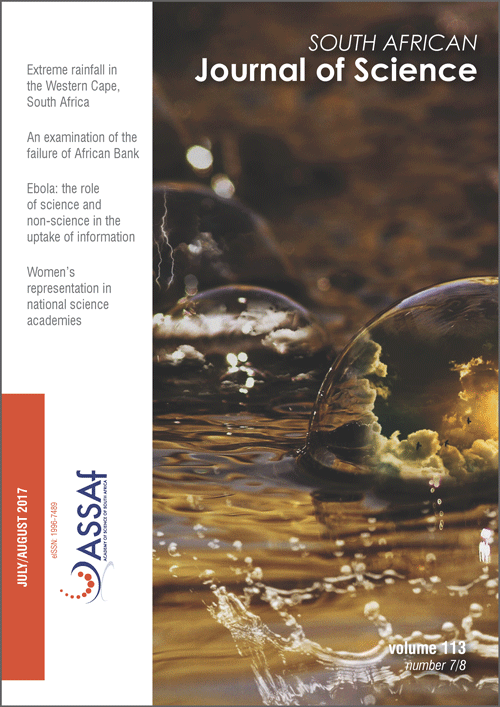A simulation study on the effect of climate change on crop water use and chill unit accumulation
DOI:
https://doi.org/10.17159/sajs.2017/20160119Keywords:
water, adaptation, deciduous fruits, management practices, irrigationAbstract
Climate change and its impact on already scarce water resources are of global importance, but even more so for water scarce countries. Apart from the effect of climate change on water supply, the chill unit requirement of deciduous fruit crops is also expected to be affected. Although research on crop water use has been undertaken, researchers have not taken the future climate into consideration. They also have focused on increasing temperatures but failed to relate temperature to chill unit accumulation, especially in South Africa. With a view of helping farmers to adapt to climate change, in this study we provide information that will assist farmers in their decision-making process for adaptation and in the selection of appropriate cultivars of deciduous fruits. Crop water use and chill unit requirements are modelled for the present and future climate. Results show that, irrespective of the irrigation system employed, climate change has led to increases in crop water use. Water use with the drip irrigation system was lower than with sprinkler irrigation as a result of efficiency differences in the irrigation technologies. It was also confirmed that the accumulated chill units will decrease in the future as a consequence of climate change. In order to remain in production, farmers need to adapt to climate change stress by putting in place water resources and crop management plans. Thus, producers must be furnished with a variety of adaptation or management strategies to overcome the impact of climate change.
Significance:- Producers must closely monitor the usage of efficient irrigation technology.
- Climate adaptation needs to be anticipated years in advance and will require a transition to different crop species or cultivars or the development of management practices.
- The results of this study will guide producers in the selection of cultivars when re-establishing their orchards.
Published
Issue
Section
License

All articles are published under a Creative Commons Attribution 4.0 International Licence
Copyright is retained by the authors. Readers are welcome to reproduce, share and adapt the content without permission provided the source is attributed.
Disclaimer: The publisher and editors accept no responsibility for statements made by the authors
How to Cite
- Abstract 635
- PDF 911
- EPUB 232
- XML 240













.png)